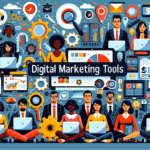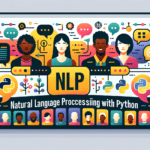Ever chatted with a customer service rep online and later realized it was a bot? Welcome to the fascinating world of chatbots! With businesses tapping into automation for enhanced customer engagement, chatbot platforms are the unsung heroes behind the scenes.
Why Chatbots Matter?
First, imagine visiting an online store at 3 am, having questions, and getting them answered instantly. That’s the magic of chatbots. These digital assistants boost user engagement, offer 24/7 support, and even save costs for businesses. Did you hear about the bank that saved over 4 million hours of human effort? Yep, a chatbot was their star player.
The Essential Features of Chatbot Platforms
Just like you’d pick a smartphone based on its features, the same goes for chatbot platforms. You’d want one that seamlessly integrates with your existing systems, possesses the smarts of AI, is easy to navigate, and scales as your business grows.
Breaking Down the Top Platforms
The tech landscape offers a platter of platforms, but here are some that have stood out:
-
Dialogflow:
Google’s brainchild known for its natural language processing prowess.
-
IBM Watson Assistant:
More than just a chatbot, it’s like hiring a super-smart digital employee.
-
Microsoft Bot Framework:
Build, test, deploy. It’s like the Swiss army knife of chatbots.
-
Tars:
Known for its lead generation bots. If you’re into sales, give this one a nod.
-
MobileMonkey:
A favorite for Facebook Messenger marketing aficionados.
Choosing a chatbot platform is akin to selecting your favorite ice cream flavor. The market is overflowing with enticing options, and it can be challenging to pick one.
Let’s Delve into the platforms and Understand What Makes Them Stand Out
-
Dialogflow
A Symphony of User Intent Understanding
Imagine having a conversation with someone who always gets you, no matter how convoluted your expression might be. That’s Dialogflow for you.
Natural Language Processing (NLP):
Dialogflow’s hallmark feature, NLP ensures that the chatbot understands the nuances of human language. Whether it’s slang, regional dialects, or common phrases, Dialogflow is proficient at grasping user intent.
Integrations Galore:
This platform isn’t just about understanding; it’s about fitting in seamlessly. Dialogflow can be integrated with popular platforms like Slack, Facebook Messenger, and more.
User-Friendly Interface:
Even if you aren’t a tech guru, Dialogflow’s interface ensures you don’t feel lost. It’s designed for both developers and non-developers.
-
IBM Watson Assistant
More Than Just a Bot: The Digital Genius
IBM’s reputation precedes itself, and their chatbot platform is no exception.
Deep Insights:
With Watson, you’re not just getting answers; you’re gaining insights. It breaks down user interactions, providing valuable feedback to enhance future customer experiences.
Minimal Training Data Required:
While some platforms need extensive data to start, Watson boasts of a quick learning curve. A few interactions and it’s already on its way to becoming an expert.
Omni-channel Abilities:
Be it a website, mobile app, or any other channel, Watson ensures consistency everywhere.
-
Microsoft Bot Framework
The Swiss Army Knife of Chatbots
Microsoft brings its legacy of user-centric solutions to the world of chatbots.
Build Once, Deploy Anywhere:
This is the magic mantra of Microsoft’s platform. You don’t need to customize your bot for different platforms repeatedly. Create it once and watch it integrate effortlessly everywhere.
Adaptive Dialogs:
Microsoft understands that conversations aren’t linear. Their adaptive dialogs ensure that chatbots can manage dynamic conversations without a hitch.
Open-source SDK:
For those who love to tinker and customize, Microsoft’s open-source software development kit is a boon.
-
Tars
The Conversion Magician
In the world of online marketing, conversion is the ultimate goal, and Tars is a master at it.
Lead Gen Bots:
While chatbots serve various purposes, Tars specializes in bots that are designed to capture leads. They’re persuasive, engaging, and have one clear mission boost those conversion rates.
Customizable Templates:
Not everyone is a designer, and Tars gets that. Their array of templates ensures you have a visually appealing chatbot without burning the midnight oil.
-
MobileMonkey
The Facebook Marketing Maverick
If Facebook is your primary digital marketing playground, then MobileMonkey is your star player.
Blasts & Drip Campaigns:
Send out timely messages or set up drip campaigns. MobileMonkey ensures your audience remains engaged.
Ad Integration:
Why limit your chatbot to conversations? With MobileMonkey, you can integrate ads, ensuring your marketing efforts are multi-dimensional.
Dynamic Content:
Static content is so last decade. MobileMonkey’s chatbots can offer quizzes, surveys, and even GIFs, ensuring users are not just engaged but entertained.
Chatbots and Data Privacy: Guarding the Digital Treasure
In an era where data is touted as the new gold, safeguarding this treasure is of paramount importance. Chatbots, like other digital entities, access a wealth of user data. This isn’t just about names and emails; it’s about preferences, behaviors, and sometimes even financial details.
Why Privacy Matters
Imagine telling a friend a secret, only to find out they blabbed to the entire town. Unpleasant, right? Now, think of chatbots as that friend. Users share details expecting confidentiality. A breach isn’t just about compromised data; it’s about broken trust. With regulations like GDPR in place, businesses not only have moral but also legal obligations to protect user data.
Chatbots: The Privacy Champions
Selecting platforms that prioritize data privacy is the way forward. Look for encryption techniques, data handling and storage policies, and GDPR compliance. Remember, a shielded chatbot is a trustworthy chatbot.
The Cost Factor: Investing in Digital Genies
Everyone loves free stuff. But when it comes to chatbots, the age-old saying rings true: you get what you pay for.
The Sweet Lure of Free Trials
While free trials offer a taste of what’s on offer, they rarely provide the full platter. They’re the appetizers, not the main course.
The Premium Magic
Paying for a chatbot platform is an investment. Premium features often include advanced analytics, better customization, superior integration capabilities, and priority support. The initial cost might seem hefty, but the returns in terms of enhanced user experience and data insights can be monumental.
Future of Chatbots: Stepping into Tomorrow
The horizon of chatbots stretches beyond mere customer service. The future seems plucked straight out of a sci-fi novel!
Virtual Reality (VR) Merges with Chatbots
Picture this: donning VR glasses, entering a digital museum, and having a chatbot curator narrate artworks’ history. Or, virtually trying on outfits for a friend’s wedding, with a chatbot stylist offering fashion tips. The integration of VR and chatbots promises experiences that are immersive and interactive.
Learning and Evolving
Tomorrow’s chatbots won’t just respond; they’ll predict. With advancements in AI, they’ll preempt user queries, offering solutions even before the user articulates them.
Choosing the Best Platform for Your Needs: The Digital Matchmaking
A multinational conglomerate and a budding startup walk into a bar. Do they order the same drink? Probably not. Similarly, their chatbot needs differ.
Size Matters, but So Does Purpose
While a startup might prefer cost-effective solutions, a large enterprise might look for scalability and integration. But it’s not just about size. A health sector startup might prioritize data privacy more than a fashion startup.
A Bespoke Approach
Instead of being swayed by popular opinion, assess what your specific needs are. Dive deep into what your audience wants, the platforms they frequent, and the kind of interactions you envision.
Conclusion
In conclusion, each chatbot platform is unique, catering to specific needs. Your choice should align with your business goals, user preferences, and the kind of interaction you envision. After all, in this digital age, your chatbot is often the first point of contact with your audience. Why not make it the best one?




